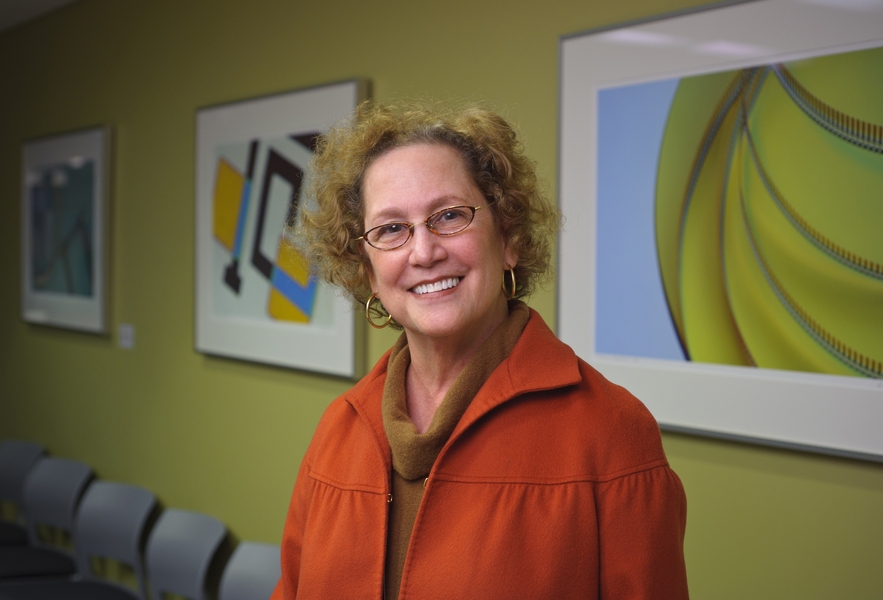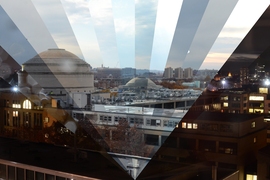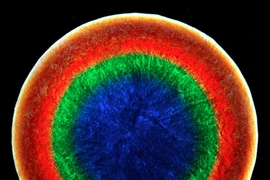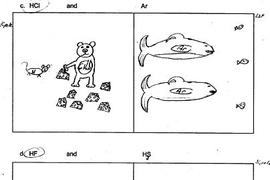Whether it’s in academia or industry, there’s an underappreciated and overlooked obstacle to success: Solid research becomes undone by a sub-standard image.
Felice Frankel sees this happen regularly. She’s a research scientist in the Center for Materials Science and Engineering. She’s also a photographer working across departments, helping faculty and students appreciate that the consideration given to data is the same that’s needed for its depiction. Otherwise, the full story won’t be told.
For Frankel, it’s an unsurprising problem, since it’s easy for people to become beholden to their original idea. But it can also be an easy fix. With a few tweaks, while maintaining the integrity of the science, an image can become sharper and more impactful. Through her consulting and classes, her consistent goal is trying to get scientists and future scientists to take a step back and re-imagine what’s in front of them.
“It’s opening up people’s eyes to seeing,” she says. “It’s about pushing your thinking as you image your work.”
When there’s no distance to judge
The biggest mistake Frankel sees in scientific images is an overload of information. It’s an understandable error, she says. Scientists perform years of research and want to show all of the work that they’ve done, but pure quantity merely serves to blunt the message. They also have lived with their findings and assume that the salient points that are obvious to them are apparent to everyone else. “It doesn’t work that way,” she says.
The challenge is to think of the first-time viewer. That ability to pull back and think critically of one’s work doesn’t just help with reaching a wider audience of magazine readers. It’s a vital skill for the unavoidable reality of raising money. Not everyone who controls funding innately understands the significance of certain research, and having a visual vocabulary helps eliminate ambiguity and sell the idea, Frankel says.
That skill needs to be built, and part of that comes from collaborating, particularly with people outside of the lab. During her 20 years at MIT, Frankel has developed master classes that bring people together from across disciplines and departments to discuss their works. That process forces clarification. “They’re learning how to communicate with the non-expert,” Frankel says.
Ultimately, the actual transformation of an image or figure from somewhat passable to Frankel’s goal of “more than good enough” isn’t particularly extreme. In fact, it’s usually a minor modification. A sharper focus, simpler background, use of color, or different composition all can serve to shift the perspective and more effectively convey the intended message. “I’m convinced the process of visual clarification advances innovation,” she says. In one example of a journal submission, researchers created a figure showing their device’s evolution. Among Frankel’s changes were taking out a graph and an initial image of a powder, and instead using a schematic with stacked layers and the device in profile, which made the entire image more focused and compelling, she says.
In reality, she says, just making some initial change brings immediate improvement by simply introducing the concept of change. While she advises scientists and is called upon to fix images — and sometimes create new ones — her work also involves educating people to be able do the same and ingraining an attitude that investing the time and attention pays dividends. “Your work evolves as you discover new ideas. Why not do the same with the way you make your images?” she says.
Part of eventually being able to do that comes from experimenting and experiencing what can be done. To foster that, Frankel is developing a massive online open course (MOOC) through MITx. The intent with “Making Science and Engineering Pictures” is to make the information and techniques accessible and non-threatening. As her own means of education, Frankel says she’s been playing with a flatbed scanner, the subject of the first week of class. It’s a simple tool that’s she’s finding is both powerful and underutilized. With a high-resolution setting, details can be captured at 30-50 microns. In one example, she produced a magazine cover with 3-D layered composites in five minutes. “The wonder of the scanner, when used properly, is not only its quality, but also its speed,” she says.
Hopefully, she says, when seeing the possibilities, students and faculty will continue with the course, put more thought into representation and realize that the process is not merely about making pretty pictures. “There’s no reason you can’t create a compelling image and have at the same time the image being highly informational,” Frankel says.
What words can’t express
One project Frankel started, with a National Science Foundation grant, was Picturing to Learn. It began as a pilot program in 2003 and expanded to include over 2,000 students from 2004 to 2010. She had college students draw various phenomena with the intent of explaining a concept to a high-school student. Most of the drawings used metaphors. As she says, most drawings do, and what eventually happens with all metaphors is that they fall apart. More than just a novel exercise, Picturing to Learn revealed scientific misconceptions and what information wasn’t getting through. It became a valuable tool for faculty, says Frankel, noting that Donald Sadoway, professor of materials chemistry, changed his lectures, based on a certain error that kept appearing.
The project didn’t stop at individual drawings. Students began talking about concepts, and then they started collaborating. Frankel says that science students and graphics students worked together and ended up teaching each other about their respective disciplines.
It’s a setup and dynamic that doesn’t have to be limited to the classroom. All industries rely on images and other forms of representation. Their importance is universal, since, “Everybody is selling and trying to get attention,” Frankel says. The selling becomes more effective when there’s a cohesive voice. The challenge is that some concepts are hard to explain with just words. Again, visual fluency becomes an essential skill to possess.
A business team can have a meeting, discuss a project, and only get so far. But when everyone sits down and sketches together, Frankel says, members can see not only when they’re not of the same mind but also where the breakdown is. The process makes for a more productive depiction. “The need to express it to someone else forces you to figure out what in the world you’re saying,” she says. “The visual is the nexus of these kind of conversations.”










